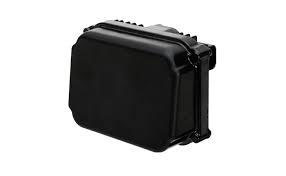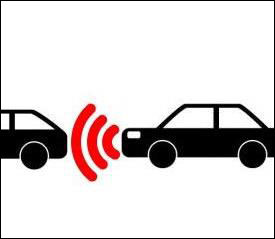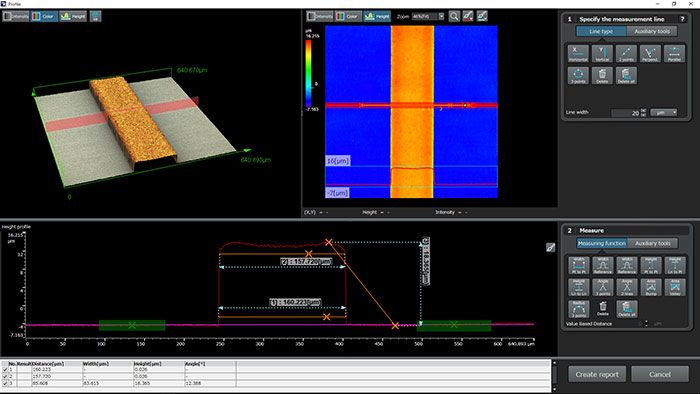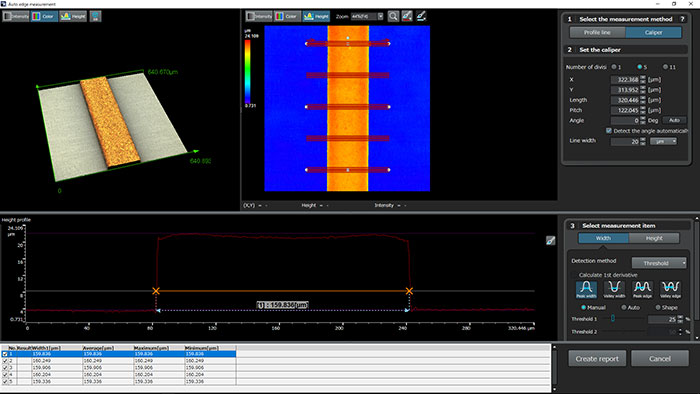
A millimeter-wave radar
Application
To help improve safety, many automobile manufacturers now include an advanced driver assistance system (ADAS) in their cars. Many of these systems use millimeter-wave radars to provide position and size information to the ADAS.
Millimeter waves have high linearity (directionality) and a short wavelength, making them well-suited for use in sensors. With these properties, automotive millimeter-wave radars have been widely adopted as parts of anti-collision systems. They use a frequency of 76 GHz or 77 GHz and a wavelength of about 4 mm. Mounted on the front of a car, a millimeter-wave radar can measure the distance to the vehicle traveling ahead and its relative speed. When the distance/speed combination comes close to a dangerous level, the sensor can send a warning to the driver. Current sensors can obtain information about vehicles up to 200 meters (656 feet) ahead.
Because millimeter-wave radar sensors have a short wavelength, the shape of their transmission circuit needs to have a high degree of dimensional accuracy. If the dimensions do not meet specifications, there could be transmission loss of the millimeter wave, potentially compromising distance/speed measurements. For this reason, it is important to measure the circuit’s shape with high accuracy and carefully manage the dimensions.
Olympus' solution
Measuring the shape of millimeter-wave radar circuit boards using the LEXT OLS5000 3D laser scanning microscope
Measuring the shape of a circuit board
- Dedicated LEXT objective lenses are tuned to the microscope’s 405 nm laser light source to achieve a horizontal resolution as high as 0.12 µm. This enables you to perform highly-accurate shape measurement of the circuit board of millimeter-wave radars.
- Even when the side surface of a circuit is nearly vertical, its shape can still be measured precisely with no measurement noise.
- The system enables you to specify multiple points on a circuit and then measure the line width at each point.
- The measured field of view data can be stitched horizontally so that you can acquire 3D data over a wide area with high accuracy.
- The differential analysis function enables you to identify the differences between two data points. By comparing the 3D data for two circuits, differences in dimensional accuracy can be checked both visually and numerically.
- In addition to the width and height of a circuit, you can also confirm area and volume data.
- The shape is acquired as numerical data but is also acquired and displayed as three types of image data—color, laser, and height—enabling users to check the texture by viewing the numerical data as images.
Images

How the millimeter-wave radar works

The width and height measurements of a millimeter-wave radar antenna circuit board
* The circuit’s nearly vertical side surface is captured as a clear image and profile.
* Changing and specifying the circuit’s height enables width measurement at different heights.

Line width measurement at different points on a millimeter-wave radar antenna circuit board

